Henges! What The Heck Are They? And Why Is The Word For Studying Them (and Various Monuments Around The

Henges! What the heck are they? And why is the word for studying them (and various monuments around the world that serve a similar purpose) so friggin long? Archaeoastronomy? What even is that? I got quite a few requests for this one so hopefully I did it justice... in my own special, somewhat contrary way.
Below the cut is some elaboration on the episode itself, including my sources, music credits, a glossary, some Google Maps images of the locations I talk about, and a transcript (not an exact record of this episode, but it’s the loose, fairly conversational script I was working with). I mention a couple of books and quote a couple people in this episode so if you want to see that written down, those sources are there too. I’m also on Twitter at @HDandtheVoid.
Let me know what you think of this episode, let me know what you think I should research next*, tell me a fun space fact… anything’s helpful at this point!
*(My thoughts were planets or star classifications. Give me some feedback by May 25th so I can start working on it! The next episode will be on June 5th.)
Glossary:
archaeoastronomy - the study of the astronomical practices, celestial lore, mythologies, religions, and world-views of all ancient cultures. The anthropology of astronomy.
equinox - twice a year, in the spring (vernal equinox) and fall (autumnal equinox), the 23.5-degree tilt of the Earth’s axis and Earth’s orbit around the sun combine in such a way that the axis is inclined neither away from nor toward the sun. The day and night are of equal length.
henge - a prehistoric monument consisting of a circle of stone or wooden uprights.
kiva - a room used for rituals and political meetings for many Southwest American Indian tribes.
petroglyph - rock carvings made by pecking directly on the rock surface using a stone chisel and a hammerstone. The desert varnish on the surface of the rock is chipped off, exposing the lighter rock underneath.
solstice - twice a year, in the summer (Midsummer) and winter (Midwinter), the 23.5-degree tilt of the Earth’s axis and Earth’s orbit around the sun mean that the axis is inclined away from or toward the sun. In Midsummer, the day is longest; in Midwinter, the day is shortest.
Script/Transcript (I do tend to embellish in the moment of recording so it’s not exact, but all the facts are there and I can’t know a fact and not talk about it so trust me, all you’re missing is probably another swear word or two)
Chaco Canyon, New Mexico, United States of America

Chichen Itza, Yucutan, Mexico

Stonehenge, Salisbury, England

Newgrange, County Meath, Republic of Ireland

Sources:
The definition of ‘henge’
A slightly more exciting definition of ‘henge,’ with pictures
Classifications of henges in the British Isles
The definition of a petroglyph, with pictures
A 3-minute video about solstices and equinoxes that has images of Chichen Itza and Stonehenge as well as Macchu Picchu, via National Geographic
Another explanation of the equinoxes and solstices; no video, though
The great Stonehenge Purchase!
More on the great Stonehenge Purchase!
Neil deGrasse Tyson writes about Manhattanhenge
Find your own city’s henge!
Burl, Aubrey. The Stone Circles of Britain, Ireland, and Brittany. Yale UP: New Haven, CT, 2000. Located on Google Books.
Crouper, Heather and Nigel Henbest. The History of Astronomy. Firefly Books: Buffalo, NY, 2007.
Clive Ruggles quote: “Generally people in indigenous cultures in the past tried to make sense of the cosmos—of the world around them—by drawing links between things; things in the sky, things around them in the landscape, and social things too—all mixed in” (14).
G.B. Cornucopia quote: “One of the Chacoan people’s tools was certainly astronomy, and they were interested in astronomy because anyone living in this harsh environment who does not understand their environment will not survive” (11).
Ed Krupp quote: “Usually monumental architecture isn’t dedicated to observing the sky. It’s a way that people express how they feel at home in the universe; but also how they control the universe” (21).
Glowacki, Donna M. Living and Leaving: A Social History of Regional Depopulation in Thirteenth-Century Mesa Verde. U of AZ P: Tucson, AZ, 2015. Located on Google Books.
McCluskey, S. C. “Historical Archaeoastronomy: The Hopi Example.” Archaeoastronomy in the New World. Ed. A. F. Aveni. London: Cambridge UP, 1982 (31-58).
McCluskey quote: “began watching when the sun ‘went in’ near the cultural center and motel on Second Mesa” (38).
Williamson, R. A. et al. “Anasazi Solar Observatories.” Native American Astronomy. Ed. A. F. Aveni. Austin: U Texas P, 1977 (203-218).
Intro Music: ‘Better Times Will Come’ by No Luck Club off their album Prosperity
Filler Music: ‘Leaves’ by Patients aka Ben Cooper, who primarily releases music as Radical Face but also has at least three other bands or band names he’s working with/has released music as.
Outro Music: ‘Fields of Russia’ by Mutefish off their album On Draught
More Posts from Fillthevoid-with-space and Others

I’m back with the last episode of 2018! A conversation with a friend sparked this idea and I just ran with it while I had the inspiration, so please enjoy an episode on the strange and wonderful scales that astronomers have created to quantify data that is very unusual.
Below the cut are the glossary, transcript, sources, and music credits. Send me any topic suggestions via Tumblr message (you don’t need an account for it!). You can also tweet at me on Twitter at @HDandtheVoid, or you can ask me to my face if you know me. Subscribe on iTunes to get the new episodes of my ideally-monthly-updated podcast (I hope I have more inspiration/time in 2019), and please please please rate and review it. Go ahead and tell friends if you think they’d like to hear it, too!
(My thoughts on the next episode are the Coriolus Force, Stephen Hawking, or famous comets. The next episode will go up in 2019, hopefully in early January!)
Glossary
background risk - the average risk from random impacts of space objects with Earth.
Bortle Scale - an objective scale to measure the clarity and effect of light pollution on a night’s stargazing.
Drake Equation - a way to estimate the number of potential active, communicative civilizations in the Milky Way galaxy based on 1) the average rate of star formation in our galaxy 2) the fraction of those stars that have planets 3) the average number of planets that can potentially support life per star with its own orbiting planets 4) the fraction of planets that could support life which actually develop life at some point 5) the fraction of planets with life that actually go on to develop intelligent life and civilizations 6) the fraction of civilizations that develop a technology that releases detectable signs of their existence into space 7) the length of time it would take those civilizations release detectable signals into space.
Hynek Scale - quantifies encounters with UFOs and aliens.
Kardashev Scale - measures how advanced a civilization’s technology is based on their mastery of resources and exploration into space.
METI - Messaging to ExtraTerrestrial Intelligence
Palermo Technical Impact Hazard Scale - categorizes and prioritizes the potential impact risks of objects in space, such as asteroids.
Rio Scale - quantifies the impact of any public announcement regarding evidence of extraterrestrial intelligence.
San Marino Scale - quantifies the impact of sending transmissions from Earth to extraterrestrial intelligence.
SETI - the Search for ExtraTerrestrial Intelligence.
Torino Scale - communicates the risk associated with a particular asteroid or comet’s potential to impact with Earth to the public.
Script/Transcript
Sources
10 Unusual Scientific Scales via Listverse (Sep 2010)
John Bortle’s article on his magnitude scale via Sky and Telescope, July 2006
“I have created a nine-level scale. It is based on nearly 50 years of observing experience. I hope it will prove both enlightening and useful to observers — though it may stun or even horrify some! Should it come into wide use, it would provide a consistent standard for comparing observations with light pollution.”
Bortle dark sky scale via Big Sky Astronomy Club
Bortle dark sky scale via LSU
Palermo Technical Impact Hazard Scale via NASA
The Palermo Scale is the base-10 logarithm of the relative risk.
PS = log10 R.
The relative risk R is given by R = PI / (fB × DT), where PI is the impact probability of the event in question and DT is the time until the potential event, measured in years.
The annual background impact frequency, fB = 0.03 × E-4/5, is the annual probability of an impact event with energy (E, in megatons of TNT) at least as large as the event in question.
Torino Impact Hazard Scale via NASA
Rio Scale via SETI League
San Marino Scale via SETI League
Rio and San Marino Scale history via Wikipedia
Drake Equation via Wikipedia
Nikolai Kardashev via Wikipedia
"energy consumption at ≈4×1019 erg/sec (4 × 1012 watts)."
New Variation of Kardashev Scale Developed via Edgy Labs (June 2018)
J. Allen Hynek's Scale Of UFO Classification via The Night Sky
Hynek's UFO Classification System via The Center for UFO Studies
Intro Music: ‘Better Times Will Come’ by No Luck Club off their album Prosperity
Outro Music: ‘Fields of Russia’ by Mutefish off their album On Draught
Solar System: Things to Know This Week
Like sailors of old, the Cassini mission team fondly thinks of the spacecraft as “she." On April 22, she begins her Grand Finale, a spectacular end game—22 daring dives between the planet’s atmosphere and innermost rings. Here are 10 things to know about her Grand Finale.

1. She’s Broadcasting Live This Week
On Tuesday, April 4 at 3 p.m. EDT (noon PDT), At Jet Propulsion Laboratory, the Cassini team host a news briefing to discuss the mission’s Grand Finale.
Tune in Tuesday: youtube.com/nasajpl/live

2. She’s Powered in Part By … Titan
Cassini left Earth with less than 1/30th of the propellant needed to power all her adventures at Saturn. The navigation team used the gravity of Saturn’s giant moon Titan to change course and extend the spacecraft’s exploration of Saturn. Titan also provides the gravity assist to push Cassini into its final orbits.
More on Cassini’s navigation: saturn.jpl.nasa.gov/mission/spacecraft/navigation/

3. She’s a Robot
Cassini is an orbiter that was named for 18th century astronomer Giovanni Domenico Cassini. She was designed to be captured by Saturn’s gravity and then explore it in detail with a suite of 12 powerful science instruments.
More on the Spacecraft: saturn.jpl.nasa.gov/mission/spacecraft/cassini-orbiter/

4. She Brought a Friend to Saturn
Cassini carried the European Space Agency’s Huygens Probe, which in 2005 descended through Titan’s thick, perpetual clouds and made the most distant landing to date in our solar system.
More on Huygens: saturn.jpl.nasa.gov/mission/spacecraft/huygens-probe/

5. She’s a Great Photographer
Your mobile phone likely captures dozens of megapixels in images. Cassini, using 1990s technology closer to one megapixel cameras, has returned some of the most stunning images in the history of solar system exploration.
Cassini Hall of Fame Images: go.nasa.gov/2oec6H2 More on Cassini’s Cameras: saturn.jpl.nasa.gov/imaging-science-subsystem/

6. She’s an Inspiration
Those great images have inspired artist’s and amateur image processors to create truly fantastic imagery inspired by the beauty of Saturn. Feeling inspired? There’s still time to share your Cassini-inspired art with us.
Cassini Inspires Campaign: saturn.jpl.nasa.gov/mission/cassiniinspires/

7. She’s Got a Long History
Two decades is a long time to live in the harsh environment of outer space (respect to the fast-approaching 40-year-old twin Voyager spacecraft). Launched in 1997, Cassini logged a lot of milestones over the years.
Explore the Cassini Timeline: saturn.jpl.nasa.gov/the-journey/timeline/

8. She Keeps a Diary
And, you can read it. Week after week going back to 1997, Cassini’s adventures, discoveries and status have been chronicled in the mission’s weekly significant events report.
Read It: https://saturn.jpl.nasa.gov/news/?topic=121

9. She’s Got a Fancy New App
Cassini was the prototype for NASA’s Eyes on the Solar System 3-D visualization software, so it’s fitting the latest Cassini module in the free, downloadable software is the most detailed, elaborate visualization of any mission to date.
Fly the Mission - Start to Finish: http://eyes.nasa.gov/cassini

10. She’s Going Out in a Blaze of Glory
In addition to all the new information from 22 orbits in unexplored space, Cassini’s engineers reprogrammed the spacecraft to send back details about Saturn’s atmosphere to the very last second before the giant planet swallows her up on Sept. 15, 2017.
More on the Grand Finale: saturn.jpl.nasa.gov/grandfinale
Discover more lists of 10 things to know about our solar system HERE.
Make sure to follow us on Tumblr for your regular dose of space: http://nasa.tumblr.com
In Conversation with the Sun: Parker Solar Probe Communications
Our Sun powers life on Earth. It defines our days, nourishes our crops and even fuels our electrical grids. In our pursuit of knowledge about the universe, we’ve learned so much about the Sun, but in many ways we’re still in conversation with it, curious about its mysteries.

Parker Solar Probe will advance this conversation, flying through the Sun’s atmosphere as close as 3.8 million miles from our star’s surface, more than seven times closer to it than any previous spacecraft. If space were a football field, with Earth at one end and the Sun at the other, Parker would be at the four-yard line, just steps away from the Sun! This journey will revolutionize our understanding of the Sun, its surface and solar winds.

Supporting Parker on its journey to the Sun are our communications networks. Three networks, the Near Earth Network, the Space Network and the Deep Space Network, provide our spacecraft with their communications, delivering their data to mission operations centers. Their services ensure that missions like Parker have communications support from launch through the mission.

For Parker’s launch on Aug. 12, the Delta IV Heavy rocket that sent Parker skyward relied on the Space Network. A team at Goddard Space Flight Center’s Networks Integration Center monitored the launch, ensuring that we maintained tracking and communications data between the rocket and the ground. This data is vital, allowing engineers to make certain that Parker stays on the right path towards its orbit around the Sun.

The Space Network’s constellation of Tracking and Data Relay Satellites (TDRS) enabled constant communications coverage for the rocket as Parker made its way out of Earth’s atmosphere. These satellites fly in geosynchronous orbit, circling Earth in step with its rotation, relaying data from spacecraft at lower altitudes to the ground. The network’s three collections of TDRS over the Atlantic, Pacific and Indian oceans provide enough coverage for continuous communications for satellites in low-Earth orbit.

The Near Earth Network’s Launch Communications Segment tracked early stages of Parker’s launch, testing our brand new ground stations’ ability to provide crucial information about the rocket’s initial velocity (speed) and trajectory (path). When fully operational, it will support launches from the Kennedy spaceport, including upcoming Orion missions. The Launch Communications Segment’s three ground stations are located at Kennedy Space Center; Ponce De Leon, Florida; and Bermuda.

When Parker separated from the Delta IV Heavy, the Deep Space Network took over. Antennas up to 230 feet in diameter at ground stations in California, Australia and Spain are supporting Parker for its 24 orbits around the Sun and the seven Venus flybys that gradually shrink its orbit, bringing it closer and closer to the Sun. The Deep Space Network is delivering data to mission operations centers and will continue to do so as long as Parker is operational.
Near the Sun, radio interference and the heat load on the spacecraft’s antenna makes communicating with Parker a challenge that we must plan for. Parker has three distinct communications phases, each corresponding to a different part of its orbit.
When Parker comes closest to the Sun, the spacecraft will emit a beacon tone that tells engineers on the ground about its health and status, but there will be very little opportunity to command the spacecraft and downlink data. High data rate transmission will only occur during a portion of Parker’s orbit, far from the Sun. The rest of the time, Parker will be in cruise mode, taking measurements and being commanded through a low data rate connection with Earth.

Communications infrastructure is vital to any mission. As Parker journeys ever closer to the center of our solar system, each byte of downlinked data will provide new insight into our Sun. It’s a mission that continues a conversation between us and our star that has lasted many millions of years and will continue for many millions more.
For more information about NASA’s mission to touch the Sun: https://www.nasa.gov/content/goddard/parker-solar-probe
For more information about our satellite communications check out: http://nasa.gov/SCaN
Make sure to follow us on Tumblr for your regular dose of space: http://nasa.tumblr.com.


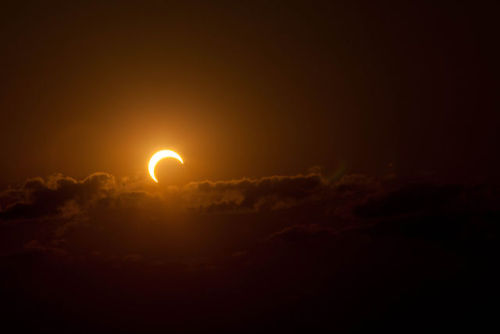

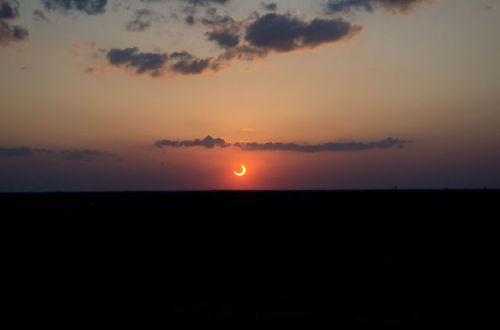


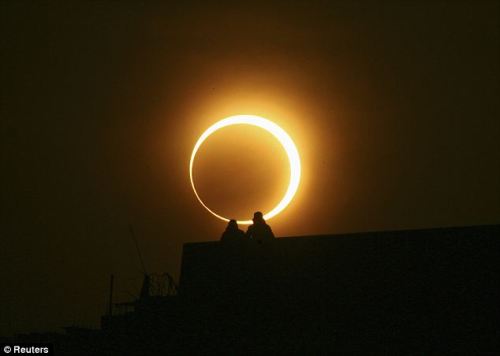
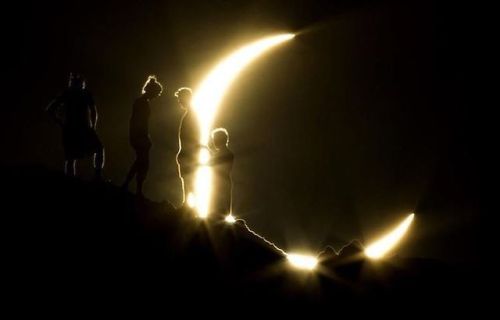
A ‘Ring of Fire’ solar eclipse is a rare phenomenon that occurs when the moon’s orbit is at its apogee: the part of its orbit farthest away from the Earth. Because the moon is so far away, it seems smaller than normal to the human eye. The result is that the moon doesn't entirely block out our view of the sun, but leaves an “annulus,” or ring of sunlight glowing around it. Hence the term “annular” eclipse rather than a “total” eclipse.

Did you know that when we classify stars, we’re comparing different types of stars but also stars at different stages of their life cycles? This is the second in a two-part episode about star classifications (go listen to Part 1 if you haven’t already; or listen to this one first and then listen to Part 1, it’s not exactly spoiler territory here). In this podcast, I talk about the various ways we've chosen to interpret observational data on stars, from observing the bright sky-dots to evaluating how bright they are by comparing them to each other, and all the new things we can do with new observational techniques. Never fear, Harvard observatory’s computers make a significant appearance again in this one!
I did my best to explain everything in as comprehensible terms as possible but you can hit me up with questions if you have them! I’m also on Twitter at @HDandtheVoid if you’d rather ask me there. And go ahead and check out the podcast on iTunes, rate it or review it if you’d like, and subscribe! I’ll always post all the extras here on tumblr but iTunes is probably more convenient for downloading.
Below the cut are my sources, music credits (thanks Elena for the filler music suggestion, very on-the-nose), vocab list, and the transcript. I mention a couple of books and quote a couple people in this episode so if you want to see that written down, those sources are there as well. Let me know what you think of this episode, let me know what you think I should research next*, tell me a fun space fact… anything’s helpful!
*(My thoughts were planets or looking into a couple major astronomers; either Edmond Halley or Tycho Brahe <3 or maybeStephen Hawking? Let me know by the 23rd so I can get a podcast up by July 3rd!)
Glossary:
Charge-Coupled Device (CCD) - a device that moves an electrical charge to shift the signal between incoming photons to turn them into electron charges that can then be read as an image. It’s used in digital cameras and in astronomy for UV-to-infrared applications.
deep-sky object - any cosmological object that isn’t individual stars or something from our Solar System. It’s a classification that includes nebulae, galaxies, and star clusters, and it has its roots in amateur astronomy.
Hipparcos satellite - the European Space Agency ‘high precision parallax collecting satellite’ that operated between 1989 and 1993. It gathered astronomical and photometric data of stars and was highly accurate in positioning and cataloging the star information it acquired on its four-year mission. Its data was published in 1997 in two catalogs: the Hipparcos Catalogue, distributed in print as well as on CDs and mapped 118,218 stars; and the Tycho Catalogue, distributed only on CDs and mapped 1,058,332 stars. The Tycho-2 Catalogue was an updated version of the Tycho Catalogue made with more refined imaging techniques and re-released on CDs and online in 2000 with over 2 million stars mapped.
neutron star - a type of star that has gone supernova, when the surviving core is 1.5 to 3 solar masses and contracts into a small, very dense, very fast-spinning star.
pulsar - a type of neutron stars that spins very, very fast: a kind of variable star that emits light pulses usually between 0.0014 seconds and 8.5 seconds.
stellar photometry/photometrics - measuring the brightness of stars and the changes of brightness over time. Previously used photographic plates and visual equipment in professional observatories, but shifted after an international photoelectric system was established in 1951. Currently we use photoelectric devices, such as CCDs.
stellar spectra classification - developed at Harvard Observatory in the 20th century, a categorization of stars based on stellar surface temperatures rather than actual compositional differences, gravity, or luminosity in stars. From highest temperature to lowest, the seven main stellar types are O, B, A, F, G, K, and M. O, B, and A type stars are often referred to as early spectral types, while cool stars like G, K, and M are known as late type stars, even though these titles are based in disproven ideas about stellar evolution.
Script/Transcript
Sources:
Standard stellar types via University of College London
List/timeline of major historical star catalogs
A brief history of early star catalogs, since the International Astronomical Union made a new star catalog in 2016.
A history of the Messier list
A history of the Messier List and how amateur astronomers use it
The Messier List
A really detailed Messier List, including Messier’s own observations on the object along with what it is currently understood to be
`Deep Sky Observers Companion online database
The Caldwell List via SEDS
The Caldwell List via the Astronomical League
Translation of ‘Durchmusterung’ via PONS online translation
Some hilarious mnemonics that are an alternative to the girl-kissing one to remember the order of stellar spectra. I don't know why there’s an entire page dedicated to this but good on you, Caltech.
Photometry overview via the Astronomical Society of South Australia
Hipparcos Catalog via NASA
History of the Hipparcos satellite and subsequent catalogs via ESA
Tycho-2 Catalog via NASA
The Hipparchos and Tycho catalogues online and downloadable if you have a whole lot of storage space to put them in
The U.S. Navy’s Naval Meteorology and Oceanography Command website has a list of recommended informational catalogs, last updated in November 2004
Information on current star charts, specialized and general, and how to download them
The Research Consortium on Nearby Stars’ website, working on cataloging and characterizing all stars within 10 parsecs/32.6 light years of Earth
The Smithsonian Astrophysical Observatory star catalog, which goes to V=9. Please don’t ask me how the hell it works, I didn’t bother ordering it
Another SAO catalog via NASA’s High Energy Astrophysics Science Archive Research Center website
If you can figure out how to navigate this catalog, you should probably take over this podcast for me.
Soba, Dava. The Glass Universe: How the Ladies of the Harvard Observatory Took the Measure of the Stars. Viking: New York, 2016.
“After all, astronomers could not yet tie any given traits of stars, such as temperature or age, to the various groupings of spectral lines. What they needed was a consistent classification—a holding pattern for the stars—that would facilitate fruitful future research” (91).
“A good number of other blank spaces in her tables pointed up other lacunae, such as missing minimum values, uncertain periods, absent spectra, or questionable variable type” (113).
Annie Jump Cannon: “Since I have done almost all the world’s work in this one branch, it was necessary for me to do most of the talking” (158)
Ogilvie, Marilyn Bailey. Women in Science: Antiquity Through the Nineteenth Century. MIT P: Cambridge, MA, 1986. Located in Google Books preview.
Mack, Pamela E. “Straying from Their Orbits: Women in Astronomy in America.” In Women of Science: Righting the Record. Ed. Gabriele Kass-Simon, Patricia Farnes, Deborah Nash. Indiana U P: Bloomington, IN, 1993 (72-116). Located in Google Books preview.
Selin, Helaine. “Battani” Encyclopaedia of the History of Science, Technology, and Medicine in Non-Western Cultures. Springer Science & Business Media: Berlin, Germany, 2011. Located in Google Books preview.
Intro Music: ‘Better Times Will Come’ by No Luck Club off their album Prosperity
Filler Music: ‘Champagne Supernova’ by Oasis off their album (What’s the Story) Morning Glory?
Outro Music: ‘Fields of Russia’ by Mutefish off their album On Draught

What is a Magnetar?
A magnetar is a type of neutron star with an extremely powerful magnetic field, the decay of which powers the emission of high-energy electromagnetic radiation, particularly X-rays and gamma rays.1
History
On March 5, 1979, several months after dropping probes into the toxic atmosphere of Venus, two Soviet spacecraft, Venera 11 and 12, were drifting through the inner solar system on an elliptical orbit. It had been an uneventful cruise. The radiation readings on board both probes hovered around a nominal 100 counts per second. But at 10:51AM EST, a pulse of gamma radiation hit them. Within a fraction of a millisecond, the radiation level shot above 200,000 counts per second and quickly went off scale.
Eleven seconds later gamma rays swamped the NASA space probe Helios 2, also orbiting the sun. A plane wave front of high-energy radiation was evidently sweeping through the solar system. It soon reached Venus and saturated the Pioneer Venus Orbiter’s detector. Within seconds the gamma rays reached Earth. They flooded detectors on three U.S. Department of Defense Vela satellites, the Soviet Prognoz 7 satellite, and the Einstein Observatory. Finally, on its way out of the solar system, the wave also blitzed the International Sun-Earth Explorer.
The pulse of highly energetic, or “hard,” gamma rays was 100 times as intense as any previous burst of gamma rays detected from beyond the solar system, and it lasted just two tenths of a second. At the time, nobody noticed; life continued calmly beneath our planet’s protective atmosphere. Fortunately, all 10 spacecraft survived the trauma without permanent damage. The hard pulse was followed by a fainter glow of lower-energy, or “soft,” gamma rays, as well as x-rays, which steadily faded over the subsequent three minutes. As it faded away, the signal oscillated gently, with a period of eight seconds. Fourteen and a half hours later, at 1:17AM on March 6, another, fainter burst of x-rays came from the same spot on the sky. Over the ensuing four years, Evgeny P. Mazets of the Ioffe Institute in St. Petersburg, Russia, and his collaborators detected 16 bursts coming from the same direction. They varied in intensity, but all were fainter and shorter than the March 5 burst.
Astronomers had never seen anything like this. For want of a better idea, they initially listed these bursts in catalogues alongside the better-known gamma-ray bursts (GRBs), even though they clearly differed in several ways. In the mid-1980s Kevin C. Hurley of the University of California at Berkeley realized that similar outbursts were coming from two other areas of the sky. Evidently these sources were all repeating unlike GRBs, which are one-shot events [see “The Brightest Explosions in the Universe,” by Neil Gehrels, Luigi Piro and Peter J. T. Leonard; Scientific American, December 2002]. At a July 1986 meeting in Toulouse, France, astronomers agreed on the approximate locations of the three sources and dubbed them “soft gamma repeaters” (SGRs). The alphabet soup of astronomy had gained a new ingredient.
Another seven years passed before two of us (Duncan and Thompson) devised an explanation for these strange objects, and only in 1998 did one of us (Kouveliotou) and her team find remains of a star that exploded 5,000 years ago. Unless this overlap was pure coincidence, it put the source 1,000 times as far away as theorists had thought—and thus made it a million times brighter than the Eddington limit. In 0.2 second the March 1979 event released as much energy as the sun radiates in roughly 10,000 years, and it concentrated that energy in gamma rays rather than spreading it across the electromagnetic spectrum.2
About 26 magnetars are known (see here).
1 http://en.wikipedia.org/wiki/Magnetar
2 http://solomon.as.utexas.edu/~duncan/sciam.pdf




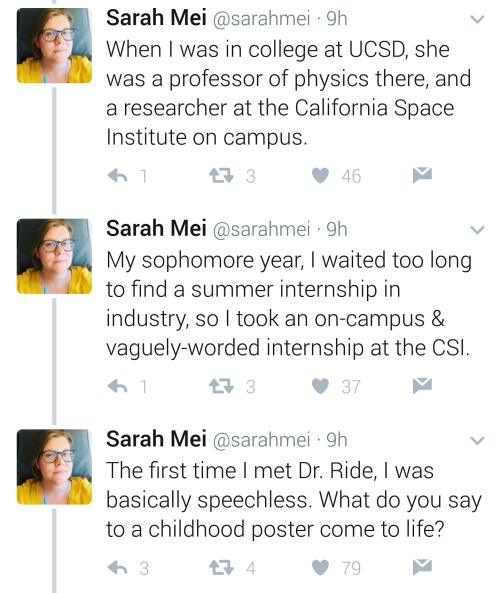
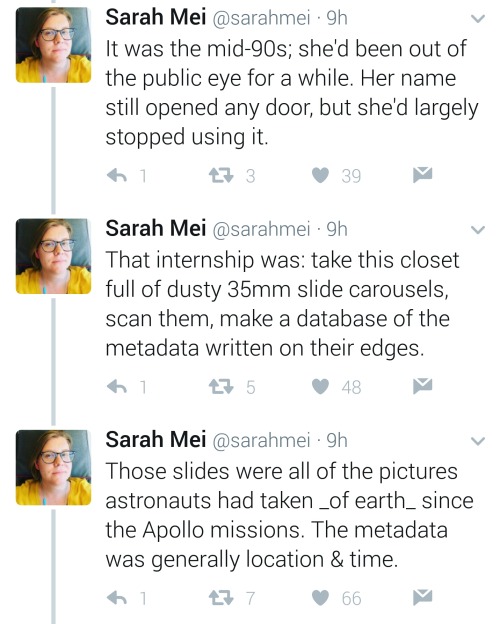
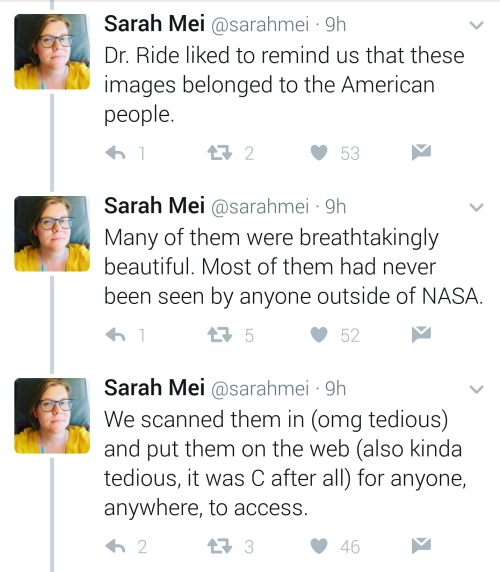



Equal opportunity benefits can be far-reaching
https://twitter.com/sarahmei/status/818682610712866817
pretty space words
aphelion - the point in the orbit of a planet, asteroid, or comet at which it is farthest from the Sun. astral - relating to or resembling the stars. caldera - a large volcanic crater, especially one formed by a major eruption leading to the collapse of the mouth of the volcano. celestial - positioned in or relating to the sky, or outer space as observed in astronomy. constellation - a group of stars forming a recognizable pattern. cosmos - the universe seen as a well-ordered whole. equinox - the time or date at which the sun crosses the celestial equator, when day and night are of equal length. faculae - bright patches that are visible on the Sun’s surface. lunation - the interval of a complete lunar cycle, between one new Moon and the next. interstellar - occurring or situated between stars. nebula - a cloud of gas and dust in outer space, visible in the night sky either as an indistinct bright patch or as a dark silhouette against other luminous matter. perihelion - the point in the orbit of a planet, asteroid, or comet at which it is closest to the Sun. synodic - relating to or involving the conjunction of stars, planets, or other celestial objects.
-
 like-gossamer reblogged this · 8 years ago
like-gossamer reblogged this · 8 years ago -
 letsfollowthesedays liked this · 8 years ago
letsfollowthesedays liked this · 8 years ago -
 fillthevoid-with-space reblogged this · 8 years ago
fillthevoid-with-space reblogged this · 8 years ago
A podcast project to fill the space in my heart and my time that used to be filled with academic research. In 2018, that space gets filled with... MORE SPACE! Cheerfully researched, painstakingly edited, informal as hell, definitely worth everyone's time.
243 posts

